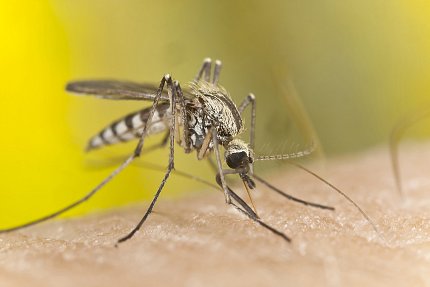Eastern Equine Encephalitis Virus Poses Emergent Threat

Photo: HENRIK_L/ISTOCK
Although eastern equine encephalitis (EEE), a mosquito-borne illness, has existed for centuries, 2019 has been a particularly deadly year for the disease in the United States. As of Nov. 12, 36 confirmed cases of EEE had been reported by 8 states; 13 of these cases were fatal.
In a new commentary in The New England Journal of Medicine, officials from NIAID describe the eastern equine encephalitis virus (EEEV) that causes EEE, current research efforts to address EEE and the need for a national strategy to address the growing threat of EEEV and other emerging and re-emerging viruses spread by mosquitoes and ticks (known as arboviruses).
There were 12 documented U.S.-based EEE epidemics between 1831 and 1959. The virus is spread between Culiseta melanura mosquitoes and various tree-perching birds found in forested wetlands. Occasionally, other mosquito species transmit the virus to people and other mammals.
In people, EEEV takes roughly 3 to 10 days to cause symptoms. The virus initially causes fever, malaise, intense headache, muscle aches, nausea and vomiting; specific diagnostic testing may not reveal anything as EEEV is difficult to isolate from clinical samples and testing for EEEV antibodies may be negative.
Neurologic signs of EEE, which may appear within 5 days of infection, initially are nonspecific but rapidly progress. Most people (96 percent) infected with EEEV do not develop symptoms; however, of those who do, one-third or more die, and the others frequently suffer permanent and severe neurologic damage.
Several EEE vaccine candidates are in development but may have trouble reaching advanced development and licensure, according to the authors.
